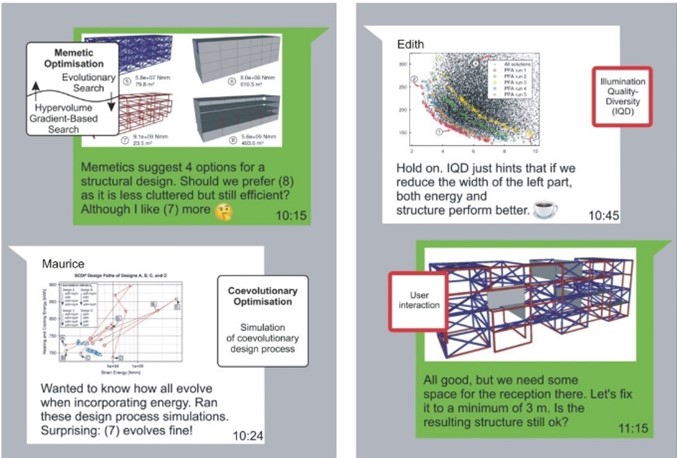
User interaction for AI Building Structural and Thermal Design
In this MSc-thesis research project, for building spatial-structural-thermal design, it is investigated how the introduction of user interaction influences automated design and optimisation processes, including structural and thermal objectives. Both quantitative measurements (is the proposed design objective better with user interaction) and qualitative indications will be used
Introduction
The built environment sees a very challenging future. An enormous number of buildings must be renovated or newly built, with less energy consumption, cradle to cradle principles, and optimised domain specific aspects, including structural safety. With the idea that not only building designs should be optimised, but also the underlying design processes, at Eindhoven University of Technology an AI toolbox has been developed, available open source on GitHub. The toolbox allows for the automated design and optimisation of buildings, via among others representation transformations; zoning by pattern recognition; disciplinary grammars; the finite element method; RC-networks; clustering; genetic algorithms; topology optimisation, etc. This MSc-thesis project is part of an NWO financed project, together with Leiden University (LIACS), the latter developing Illumination of Quality-Diversion (IQD), providing insightful relationships between the design variables and the objectives, see figure 1.

Figure 1, social platform showing design process dynamics.
Method
The project will start with a brief literature research on AI and user interaction in building design, whereafter the toolbox is explored, including some primary C++ experiments. Then a setup is developed, in which every automated design cycle will be (positively) interrupted by user interaction and modification. Users will be allowed not only to modify the designs itself, like in parametric design, but also to change optimisation settings. For this the toolbox needs specific modifications, which are developed. Then, purely automated design cycles are compared with design cycles with user interaction, carried out in design studios at TU/e. If IQD as developed at Leiden University is available, the same study is repeated with and without IQD, and findings are discussed. Finally, a thesis will be written in paper format, about 8000 words only, with appendices.
Requirements
We are looking for an enthusiastic and bright student, interested in design, parametric design, AI, and programming, preferably with good grades for the Applied Mechanics courses, and enthusiastic about organising (brief) studies in real-life design studios. A rewarding and state-of-the-art project is offered, which likely will result in a conference or journal paper. The project will be supervised by Dr. H. Hofmeyer (SED) and Dr. P. Pauwels (DDSS). If you would like to have more information on the project, do not hesitate to contact Dr. H. Hofmeyer, VRT 9.32, 040-247-2203, h.hofmeyer@tue.nl.